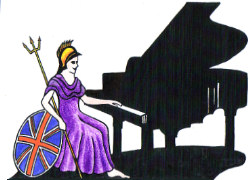Teachers, Accompanists and Piano Entertainers in the UK

UK Piano Page

Browse Locations England » London » Camden Town
Camden Town, London WC1
England
Westminster,Central London piano moving and disposal-
5 - 8 Chester Court,
Albany Street,
Camden Town, London NW1 4BU
England
For 100 years Markson Pianos have been one of the most well-known piano suppliers in the UK. Our services include hire, maintenance and restoration ...
Camden Town, London
England
As pioneers in the field of short and long term piano hire in the 1960's, Marksons have developed a wide and extensive hire fleet, ranging from the ...
40 Irongate
Derby, Derbyshire DE1 3GA
England
Charles Foulds opened the first Foulds shop in
Baptist Church
Wordsworth Rd
Stoke Newington, London N16 8DA
England
New and used sales,short and long term hire with
87, St. Clements St
Oxford, Oxfordshire OX4 1AR
England
Unit 15 Wroslyn Road Industrial Estate
Wroslyn Road
Freeland, Oxfordshire OX29 8HZ
England
Buying a piano is a big investment – financially
Grove House
Wade House Road. Shelf
Halifax, West Yorkshire HX3 7PF
England
GSG Pianos is one of the North of England’s
Music Festival for performers and guests Our 10th
18-06-2022 12:30PM
The Morecambe Bay Piano Group was set up to extend
11-12-2021 01:00PM
The Morecambe Bay Piano Group was set up to extend
08-01-2022 01:00PM
The Morecambe Bay Piano Group was set up to extend
12-02-2022 01:00PM